Towards an Engaging and Gamified Online Learning Environment—A Real CaseStudy †
Abstract
1. Introduction
2. Background
2.1. e-Learning
2.2. Online Learning
- Educational theory;
- Socio-technical constraints in online teaching and learning;
- The role of instructor, student and technologies;
- Revised course plan and checklists;
- Asynchronous and Synchronous teaching and learning tasks;
- Assessments and learning outcomes.
2.3. Digital Classrooms
- 1.
- Students are engaged in solving real-world problems.
- 2.
- Available knowledge is activated as a base of wisdom.
- 3.
- New knowledge is
- applied by the professor;
- demonstrated to the student;
- integrated into the participant (e.g., student) world.
2.4. Related Works
3. Material and Methods
3.1. TechTeach
3.1.1. Project-Based Learning (PBL)
3.1.2. Team-Based Learning
3.1.3. Gamification
3.1.4. Flipped Classes
3.1.5. Skills
3.2. Tools
3.2.1. Teach Supporting
- ioEduc helps teachers and students with their duties [31]. It is an excellent tool to support e-learning courses because it has several web-based features (e.g., attendances, live classes, chat, slides, quizzes, drive, FAQs, surveys, peer-assessment). This tool also integrates ioChat, among other features.
- ioChat arose as an internal communication platform of IOTech, and they then explored it in the educational context. It is based on RocketChat, a fully customised open-source software. It has many features, such as messages/conversations (text, video or audio), rooms (public, group, private, or discussion), notifications (message, email, online, push), plugins (polls, drive, calendar, reminder), among others.
- Zoom allows people to maintain high-quality meetings with many participants. It is one of the most recognised video-conferencing platforms and allows, for example, creating an online teaching environment and splitting students into teams (breakout rooms). Zoom is accessible and can connect long-distance participants across different rooms systems, desktops, and mobile devices [32].
3.2.2. Collaborative and Competitive
- Kahoot! is characterised as a response system that engages participants through game-like pre-made or impromptu quizzes, discussions, and surveys [34]. Its game-based learning allows professors to support their education activities [35]. According to Carolina et al. [36], “Instructional games are gaining acceptance in the classroom as the e-learning merits of student engagement, and immediate feedback is recognised”.
3.2.3. Programming
- AWS C9;
- GitHub;
- GitHub Pages;
- Heroku;
- MySQL Workbench;
- Visual Studio Code.
3.2.4. Data Analytics
3.3. Research Process
- 1.
- Developed Theory—TechTeach [17].
- 2.
- Select cases—Face-to-Face and Online.
- 3.
- Data Collection—The acquisition process was designed to include only digital data automatically collected from online platforms, including Kahoot (spreadsheets), BlackBoard (spreadsheets), ioEduc (database), ioChat (database), and Google Analytics (reports), and the answers provided by the students in the surveys (spreadsheets). All data were made anonymous and followed the General Data Protection Regulation rules as closely as possible. For example, students were asked to allow data collection since the beginning of the CUnit.
- 4.
- Case Study 1—The first case study was realised in 2019/2020, and all the details and individual reports are available in previous works [17,18]. TechTeach had minor improvements based on the feedback received and results achieved in the first study. Then, the 2nd case study was designed to assess the new developments released.
- 5.
- Case Study 2—The second case study was performed in 2020/2021, and this article presents the individual case report containing some of the previous results [3].
- 6.
- Final cases and cross-case conclusions—The researcher selected the second case study as the most relevant because it addresses a tendency: “the remote work”. The analysis of it is available in the discussion section. As a result, it was possible to observe that the theory (paradigm) suited the two environments (face-to-face and online). Still, professors can improve it to achieve a better fit in the online mode.
4. Case Study
- “Is TeachTeach ready or adapted to classes 100% online?”;
- “What is the effort needed? Is it worth it?”.
- 1.
- Innovating and guaranteeing the success of a 100% Online CUnit;
- 2.
- Using a set of trends/concepts: team and project-based learning, gamification, quizzes, flipped classes, and emerging tools for providing the best online learning environment to the students.
4.1. Context
- European Credit Transfer and Accumulation System (ECTS): 10 (Ten);
- Degree: Integrated Master;
- Year of study plan: 2nd;
- Online period: from 5 of October 2020 and 29 of January 2021;
- Registered students: One hundred and sixty-eight (168 (90% active participants, i.e., attended more than 50% of classes and 5% of inactive, i.e., the attendance rate was less than 5%));
- Professors: 5 (Five);
- Formats of classes: 3 (Three)—Theoretical (T), Theoretical-practice (TP), laboratory practices (LP);
- Weeks of work: 15 (Fifteen);
- Weeks of contact classes: 13 (Thirteen);
- Hours of work by week/student: 14 (Fourteen);
- Hours of contact by week: 6 (Six);
- Tutorial Working Time (OT) hours: 2 (Two).
- Full online classes (100%);
- Gamification mechanisms to assess student’s performance;
- An Online communication platform that allows simulating the classroom environment;
- Tests and assessments—dynamic, inclusive, and online;
- Preparation of learning content/tutorials to be carried out outside of classes (OT);
- Online repository (drive) with complementary information (books, articles, videos, or tutorials);
- FAQs with the most common issues;
- Recording of theoretical classes;
- Project-based learning with the application of a real case;
- Room for doubts and online chat;
- Continuous assessment of the CUnit and direct contact with the class delegates;
- Exploring soft skills (e.g., entrepreneurship, cross-learning, communication, adaptability, resilience, and leadership).
4.2. Challenges
4.3. Approach
4.3.1. Classes
- Zoom—At the beginning of each theoretical class, the professor started the recording and shared the ioEduc live system (containing the slides and other features) in Zoom. After a brief explanation of the week’s main topics, the professor created several breakout rooms, and the students were randomly distributed. Students were faced with some challenges to solve in a group according to the topics addressed in this phase. They could ask for support in Zoom or ioChat, and professors jumped between each room to help them. Each lesson had 20 rooms with an average of 5–7 students each. Before classes ended, all the students returned to the main room, and the professor performed a raffle among the attendees to determine which students had a bonus in the weekly quiz. Finally, the professor put the lesson video on the ioEduc drive so it was available for the students.
- ioChat—It was the primary communication tool and was selected because it is easy to customise and is based on the open-source platform rocket-chat. Before starting the CUnit, the professor created several conversation rooms according to classes, teams, and groups. Then all the students and professors were registered in ioEduc and had access to this platform. At the beginning of each lesson (TP and LP), the professor started a video call with all the students. This first video call was used to talk a little about the class goals. Then, all the students went to their particular room (team or group) and initiated another video call. Then, professors visited each room to explain possible doubts and provide support in project development. This tool allowed professors to share knowledge and have parallel classes in the same place at the same time. In the TP classes, students were grouped into teams according to their role (front-end, back-end, or full-stack). In the LP classes, the students were organised by group, following the allocation method in Figure 4. ioChat also had a set of creation rules (rooms name, username, photo, among other details), quickly identifying students, groups, projects, and professors. Stakeholders used this tool to promote and facilitate communication between them, inside and outside of the classes.
- ioEduc—This platform was chosen as the Learning Platform instead of Moodle or BlackBoard. The justification for the choice is easy; the author of this article is the same who developed the tool and included some gamification tasks (e.g., Cards and Rescue System). This choice puts ioEduc in the centre of the process, allowing a real connection between professors, students, and the subject. All the slides were available on this platform; students could, for example, ask questions, answer the quizzes, consult FAQs, or perform a peer assessment. In all classes, students registered their presence on ioEduc through the attendance system. ioEduc’s cloud drive contained recorded classes and many books, tutorials, and videos to support the OT work. Theoretical classes also used the ioEduc live system to share the slides and interact with students. Students could also consult their grades, assess group members, or rescue an assessment. The professors could realise quizzes or surveys, consult all the students’ performance details, or assign a card. ioEduc also connects many complementary tools useful for helping the classes (e.g., Cloud 9 AWS, GitHub, or Heroku).
- Cloud9—Although this unit used several programming tools, students explored joint programming online through AWS Cloud 9 (C9). All the students programmed their projects and exercises in groups using a shared repository (GitHub), i.e., they edited their files in real-time using (C9) similar to a google doc file, and the program stored all the code online. Students shared the repository and C9 account with all team members and professors. Therefore, this strategy allowed professors to see the evolution of the project and help when needed.
4.3.2. Project
- 1.
- “Secure4All” is responsible for the operations coordination of public entities. They need a web solution that helps them manage each of the occurrences received and a web/mobile app that allows their operation in the field.
- 2.
- The goal is to develop a web/mobile solution (PWA) able to support the management of public intervention units.
- 3.
- The company defined a digital transformation strategy to some of its units, namely: ASAE (Food Inspection), Firefighters (Fire), GNR (Events), INEM (Accident), Maritime Police (Drowning), Municipal Police (Robberies), PJ (Cyber-Attacks), and PSP (Disturbances).
- 4.
- Students must create teams of three groups and select the project area. The group is responsible for developing a set of features/components.
- 5.
- Each team has total working autonomy and must define the development plan for their group. The group must develop the front-end (visual) and back-end (server) layer of the assigned component.
- 6.
- Stakeholders should use the ioChat platform to meet, ask for help, and/or explain parts of the project.
- Group I—Operations Centre;
- Group II—Operations manager/Administrators;
- Group III—Field Operations Officer;
- Group IV—Audit (external entity).
- 1.
- The teams were divided by TP classes shifts;
- 2.
- There were two teams by TP class: each one with three or four groups and a specific theme;
- 3.
- Each group had six elements (±1 depending on the number of shift students) and had to include at least two front-end students, two back-end students, and one full-stack student.
- 4.
- Each student (group element) was responsible for developing a set of features/interactions.
- 5.
- The project’s features were split between front-office (without login) and back-office (with login).
- 1.
- Leadership (manage teams, groups and areas);
- 2.
- Cross-work (listen from one side—“Team”—and transmit to another—“Group”);
- 3.
- Arguing (discuss and sustain the decisions);
- 4.
- Healthy competition (make a difference and look for extra features to improve the quality of project);
- 5.
- Efficiency and simplicity (create a minimalist solution that is able to solve a real problem).
4.3.3. Assessment
- A quiz with a bonus (weekly) to reward engagement, motivation, work, and participation;
- A cards system to evaluate skills in the project;
- Three synchronised Mini-Tests to evaluate different types of knowledge (front-end, back-end, and full-stack).
- Q1—At the beginning of the class: first week;
- Q2—At the middle of the semester: week 7;
- Q3—At the end of the final week.
4.3.4. Gamification
- MT1 and MT3—Students grades were obtained through a metric based on their knowledge, questions weight, and quickness, i.e., answering time according to the average time of respondents (3rd quartile).
- MT2—Exercise one included code gaps, where students must complete them with their individual data (e.g., birthday, name). Then, they had to use their knowledge to unlock the second part of the exercise. In the end, students could achieve one of three grades (with a percentage):
- -
- −1 Student fails—does not know the basics (negative grade)—0%;
- -
- 0 Student can pass—knows the basics—100%;
- -
- 1 Student approved—knows the basics and overcame all the challenges (e.g., unlock the second part of the exercise)—110%.
The combined grade of all MTs was calculated by the formula FMT = avg(MT1, MT3) × MT2. - Quiz with bonus—During this assessment method (weekly), students had the possibility to duplicate their results (extra). This approach only awarded students in attendance. At T classes, professors made a selection of 10–15 students. The rules were simple: only the attendants of that T class were eligible, and the system could select no one more than two times without all students having been assigned at least one bonus (B). After the last quiz (final week), professors collected all the individual results (I) and applied the following rules:
- -
- 20—Student with the most points without a bonus (K);
- -
- 20—Students with points plus bonus (I + B) higher than K;
- -
- 10 to 20—Students with points plus bonus (I + B) less than K. Grade achieved by the formula: ((I + B)/K).
This exercise aimed to reward students who attended classes and answered more questions. - Rescue System—Students could only use this method in MT2. The rescue system was available to failed students (grade = −1) who thought they deserved more. The professor analysed the student process and, in the case of acceptance, they allowed them to continue with a penalty of fifteen per cent (15%) in the final MT grade (i.e., MT2 equal to 85%).
- Cards System—The card system was available, and it was used during the project by team leaders and professors. They could attribute white (positive) or yellow (negative) cards to the students. When the limit number of positive or negative cards was achieved, professors applied the rules defined in the narrative.
4.4. Numbers
- 13 classes shifts (1T, 4TP, 8LP);
- 1 Real project with 3 evaluation phases (CP1, CP2, FA);
- 8 teams (±20 students) and 27 groups (±6 students);
- 3 synchronous online Mini-Tests (2 Kahoot, 1 HackerRank);
- 2 CUnit and professors evaluations (middle and end);
- 38 questions in FAQ;
- 50 learning documents (slides and resumes)
- 76 files in drive (books, videos, Cheat Sheet, examples, video classes, OT exercises)
- The average number of responses in CUnit final evaluation was 115;
- 85% of students accept the CUnit gamification system;
- 80% was the minimum attendance of T Classes;
- The number of bonuses attributed was 144;
- 28 students received a card (8 yellow, 8 white, 6 blue, 1 orange, and 3 red) in a total of 39 interactions;
- The number of individual assessments received was 1881;
- 3 students activated the rescue system.
- 208 (two hundred and eight) hours of online classes with parallel sessions, with a total of 338 (three hundred and thirty-eight) hours;
- 80 (eighty) chat rooms;
- 4528 (four thousand five hundred and twenty-eight) online classes attendances;
- ∼ 220 k page views;
- ∼ 25 k access to the CUnit support platform (sessions);
- ∼ 16 k access to the chat (sessions);
- ∼ 15 k messages exchanged in the chat;
- ∼ 11 k file downloads;
- ∼ 106 uninterrupted days online (sum of all active sessions time).
- 1.
- Of all the students, 98.86% were enjoying online classes;
- 2.
- Of all the students, 76.53% affirmed they learned a lot;
- 3.
- Only 2.17 % of students stated that they do not appreciate CUnit.
4.5. Academic Quality CUnit Report
4.6. Word Cloud
5. Discussion
- ioChat –> (Slack or Discord) + Zoom or Team;
- ioEduc –> (Moodle or Blackboard) + Google Forms (Gamification);
- Kahoot –> Voxvote or Mentimeter.
6. Conclusions
- 1.
- “Is TeachTeach ready or adapted to classes 100% online?”
- The answer is Yes.
- -
- After finishing the teaching process, more than 80% of stakeholders (students and professors) considered this approach a success. The achieved values corroborate good results. The classes attained more than 220 k page views, 40 k sessions, 11 k downloads of files, and 15 k messages. The sum of all online sessions represented more than 106 days online.
- -
- In terms of gamification, 85% of students approved the system. In this approach, almost 150 students received a bonus, nearly 2 k of individual assessments were realised, 28 students received a card, and 3 students used the rescue system. Moreover, the class’ attraction level was high, with an average attendance of T classes over 80%.
- 2.
- “What is the effort needed? Is it worth it?”
- The answer is Yes.
- -
- It is essential to note that it was the first time using TechTeach in this context (online), so the effort was considerable. For example, the coordinator’s effort was ∼ 250% multiplied by their teaching hours (8) for an average of 20 h a week.
- -
- The point to highlight is that the professor can reuse most of the work the next time. This possibility will reduce the implementation time and can increase the results.
- -
- It is essential to have some “free” time to apply this methodology and keep students engaged when a professor has the first experience with TechTeach.
- -
- It is necessary to put in extra effort, have a good teaching team, and help the students, as the word cloud shows.
- A detailed explanation of how gamification can be used and applied in an online environment;
- A complete guide of the strategies/tools needed to have a fully online class;
- A real case study with all the details that allow measuring students’ receptivity to the TechTeach approach.
Funding
Institutional Review Board Statement
Informed Consent Statement
Data Availability Statement
Acknowledgments
Conflicts of Interest
References
- Abad-Segura, E.; González-Zamar, M.; Infante-Moro, J.; Ruipérez García, G. Sustainable Management of Digital Transformation in Higher Education: Global Research Trends. Sustainability 2020, 12, 2107. [Google Scholar] [CrossRef]
- Iivari, N.; Sharma, S.; Ventä-Olkkonen, L. Digital transformation of everyday life—How COVID-19 pandemic transformed the basic Education of the young generation and why information management research should care? Int. J. Inf. Manag. 2020, 55, 102183. [Google Scholar] [CrossRef] [PubMed]
- Portela, F. Online-Teaching Environment with Gamification—A real Case Study. In Proceedings of the Second International Computer Programming Education Conference (ICPEC 2021), Braga, Portugal, 27–28 May 2021; Voluem 91, pp. 1:1–1:13. [Google Scholar] [CrossRef]
- Wiharko, T.; Junaedi, D. Design of Learning System Using E-Learning 4.0 Based on Website. J-Tin’s-J. Tek. Inform. 2021, 5. Available online: https://ejournal.stmik-sumedang.ac.id/index.php/jtin/article/view/294 (accessed on 14 January 2022).
- Downes, S. E-learning 2.0. ELearn 2005, 2005, 1. [Google Scholar] [CrossRef]
- Fedushko, S.; Syerov, Y.; Tesak, O.; Onyshchuk, O.; Melnykova, N. Advisory and Accounting Tool for Safe and Economically Optimal Choice of Online Self-Education Services. In Proceedings of the CMiGIN, Lviv, Ukraine, 29 November 2019; pp. 290–300. [Google Scholar]
- Lapitan, L.; Tiangco, C.; Sumalinog, D.; Sabarillo, N.; Diaz, J. An Effective Blended Online Teaching and Learning Strategy during the COVID-19 Pandemic. Educ. Chem. Eng. 2021, 35, 116. Available online: https://www.sciencedirect.com/science/article/pii/S1749772821000129 (accessed on 14 January 2022). [CrossRef]
- Dumford, A.; Miller, A. Online learning in higher Education: Exploring advantages and disadvantages for engagement. J. Comput. High. Educ. 2018, 30, 452–465. [Google Scholar] [CrossRef]
- Ali, W. Online and remote learning in higher education institutes: A necessity in light of COVID-19 pandemic. High. Educ. Stud. 2020, 10, 16–25. [Google Scholar] [CrossRef]
- Parry, M. Online, bigger classes may be better classes. Chron. High. Educ. 2010, 57, A1–A22. [Google Scholar]
- Eskindarov, M.; Soloviev, V.; Anosov, A.; Ivanov, M. University Web-Environment Readiness for Online Learning During COVID-19 Pandemic: Case of Financial University. In Proceedings of the Computational Science and its Applications—ICCSA 2021, Cagliari, Italy, 13–16 September 2021; Springer: Berlin/Heidelberg, Germany, 2021; pp. 708–717. [Google Scholar]
- Estrellado, C. Transition to Post-Pandemic Education in the Philippines: Unfolding Insights. Int. J. Sci. Res. 2021, 11. ISSN 2250-3153. [Google Scholar] [CrossRef]
- Pettersson, F. Understanding digitalisation and educational change in school by means of activity theory and the levels of learning concept. Educ. Inf. Technol. 2021, 26, 187–204. [Google Scholar] [CrossRef]
- Tarabasz, A.; Selakovic, M.; Abraham, C. The classroom of the future: Disrupting the concept of contemporary business education. Entrep. Bus. Econ. Rev. 2018, 6, 231. [Google Scholar] [CrossRef]
- Olofsson, A.; Fransson, G.; Lindberg, J. A study of the use of digital technology and its conditions with a view to understanding what ’adequate digital competence’may mean in a national policy initiative. Educ. Stud. 2020, 46, 727–743. [Google Scholar] [CrossRef]
- Merrill, M. First principles of instruction. Educ. Technol. Res. Dev. 2002, 50, 43–59. [Google Scholar] [CrossRef]
- Portela, F. TechTeach—An innovative method to increase the students engagement at classrooms. Information 2020, 11, 483. [Google Scholar] [CrossRef]
- Portela, F. A new and interactive teaching approach with Gamification for motivating students in computer science classrooms. In Proceedings of the First International Computer Programming Education Conference (ICPEC 2020), Barcelos, Portugal, 2–3 June 2020. [Google Scholar] [CrossRef]
- Bell, S. Project-based learning for the 21st century: Skills for the future. Clear. House 2010, 83, 39–43. [Google Scholar] [CrossRef]
- Krajcik, J.; Blumenfeld, P. Project-Based Learning; The Cambridge Handbook of the Learning Sciences, Cambridge University Press: Cambridge, UK, 2014; pp. 275–297. [Google Scholar]
- Glavin Examples of Project-Based Learning|K12 Academics. 2019. Available online: https://www.k12academics.com/Educational%20Practices/Project-Based%20Learning/examples-project-based-learning (accessed on 9 March 2021).
- Haidet, P.; Kubitz, K.; McCormack, W. Analysis of the team-based learning literature: TBL comes of age. J. Excell. Coll. Teach. 2014, 25, 303. [Google Scholar]
- Hills, H. Team-Based Learning; Gower Publishing, Ltd.: Hampshire, UK, 2001; pp. 105–107. Available online: http://www.jstor.org/stable/40214174 (accessed on 14 January 2022).
- Kapp, K. The Gamification of Learning and Instruction: Game-Based Methods and Strategies for Training and Education; John Wiley & Sons: Hoboken, NJ, USA, 2012; ISBN 978–1-118-09634-5. [Google Scholar]
- Davis, C. Flipped or inverted learning: Strategies for course design. In Enhancing Instruction with Visual Media: Utilising Video and Lecture Capture; IGI Global: Pennsylvania, PA, USA, 2013. [Google Scholar]
- Bouzid, T.; Kaddari, F.; Darhmaoui, H.; Bouzid, E. Enhancing Math-class Experience throughout Digital Game-based Learning, the case of Moroccan Elementary Public Schools. Int. J. Mod. Educ. Comput. Sci. 2021, 5, 1–13. [Google Scholar] [CrossRef]
- Palomino, P.; Toda, A.; Oliveira, W.; Cristea, A.; Isotani, S. Narrative for Gamification in Education: Why should you care? In Proceedings of the 2019 IEEE 19th International Conference on Advanced Learning Technologies (ICALT), Maceio, Brazil, 15–18 July 2019; Volume 2161, pp. 97–99. [Google Scholar]
- Ramírez-Montoya, M. Inverted learning environments with technology, innovation and flexibility: Student experiences and meanings. J. Inf. Technol. Res. (JITR) 2016, 9, 18–33. [Google Scholar] [CrossRef]
- Araújo, C. The Bologna Process and curricular changes at higher Education: What are skills for? Educ. Pesqui. 2018, 44. [Google Scholar] [CrossRef][Green Version]
- Partenie, C. The bologna process: Between past reforms and the innovative future. In Proceedings of the International Multidisciplinary Scientific Conferences on Social Sciences and Arts, Albena, Bulgaria, 2–7 September 2014. [Google Scholar]
- Silva, M.; Ferreira, D.; Portela, F. IoEduc-Bring Your Own Device to the classroom. In Proceedings of the First International Computer Programming Education Conference, ICPEC 2020, Vila Do Conde, Portugal, 25–26 June 2020; ESMAD (Virtual Conference). Voluem 81, pp. 23:1–23:9. [Google Scholar] [CrossRef]
- Sutterlin, J. Learning is social with zoom video conferencing in your classroom. ELearn 2018, 2018. [Google Scholar] [CrossRef]
- Fernandes, G.; Portela, F.; Santos, M. PWA and pervasive information system–a new era. In Proceedings of the World Conference On Information Systems and Technologies, Budva, Montenegro, 7–10 April 2020; pp. 334–343. [Google Scholar]
- Dellos, R. Kahoot! A digital game resource for learning. Int. J. Instr. Technol. Distance Learn. 2015, 12, 49–52. [Google Scholar] [CrossRef]
- Correia, M.; Santos, R. Game-based learning: The use of Kahoot in teacher education. In Proceedings of the International Symposium On Computers In Education (SIIE), Lisbon, Portugal, 9–11 November 2017; pp. 1–4. [Google Scholar]
- Plump, C.; LaRosa, J. Using Kahoot! in the classroom to create engagement and active learning: A game-based technology solution for e-learning novices. Manag. Teach. Rev. 2017, 2, 151–158. [Google Scholar] [CrossRef]
- HackerRank HackerRank. Available online: https://www.hackerrank.com/ (accessed on 15 March 2021).
- Dan, A.; Adrian, A. Computer Science Platform. Bachelor’s Thesis, Alexandru Ioan Cuza University, Iasi, Romania, 2018. [Google Scholar]
- Su, B. What is Google Analytics, and Why Is It Important to My Business? Available online: https://medium.com/analytics-for-humans/what-is-google-analytics-and-why-is-it-important-to-my-business-8c083a9f81be (accessed on 16 March 2021).
- Whitelock, D.; Mackenzie, D.; Whitehouse, C.; Ruedel, C.; Rae, S. Identifying Innovative and Effective Practice in e-Assessment: Findings from Seventeen UK Case Studies; Professional Development, Loughborough University: Loughborough, UK, 2006. [Google Scholar]
- Lubbe, S. The development of a case study methodology in the information technology (IT) field: A step by step approach. Ubiquity 2003, 2003, 2. [Google Scholar] [CrossRef]
- Paxton, J. Live programming as a lecture technique. J. Comput. Sci. Coll. 2002, 18, 51–56. [Google Scholar]
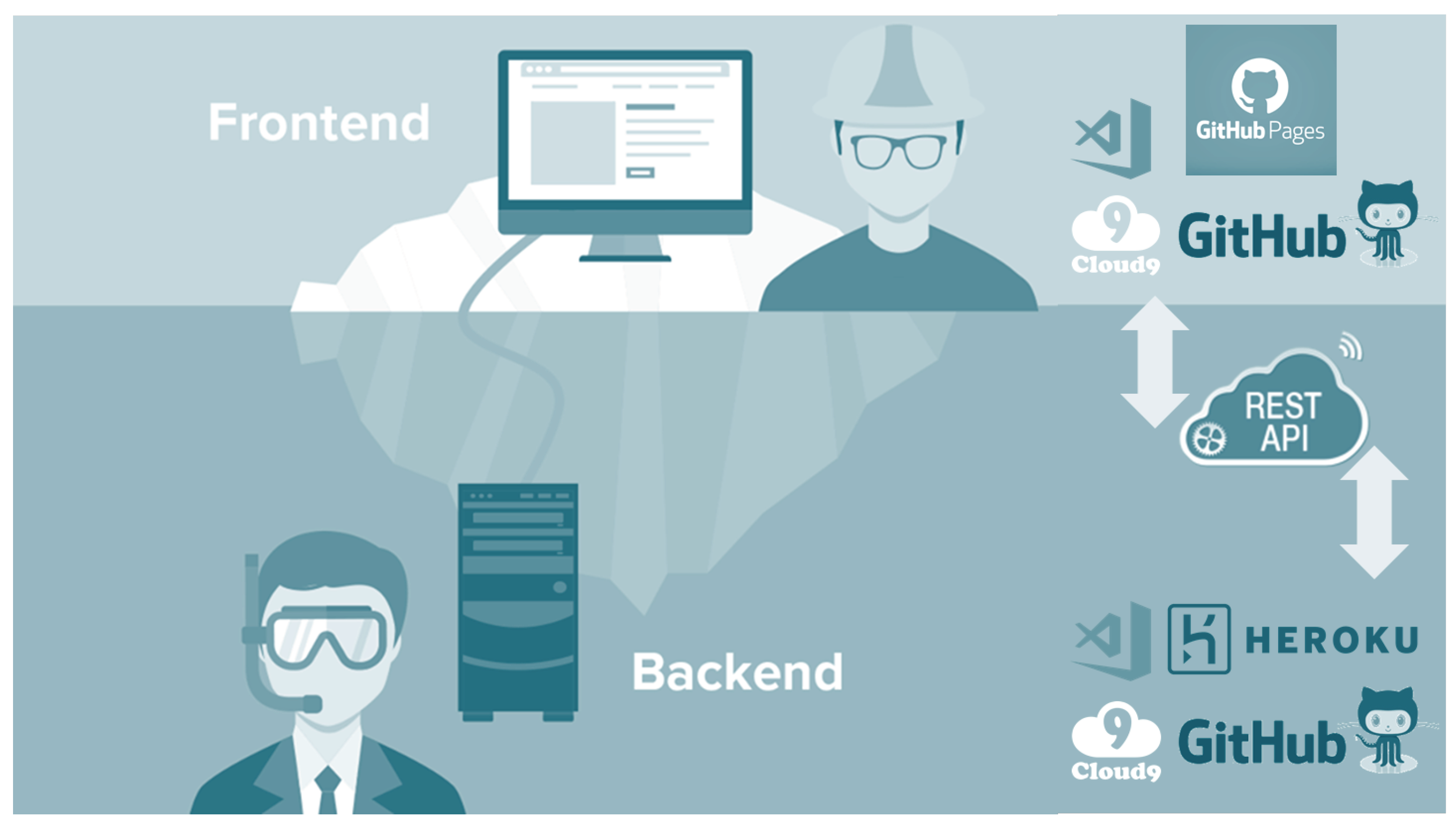


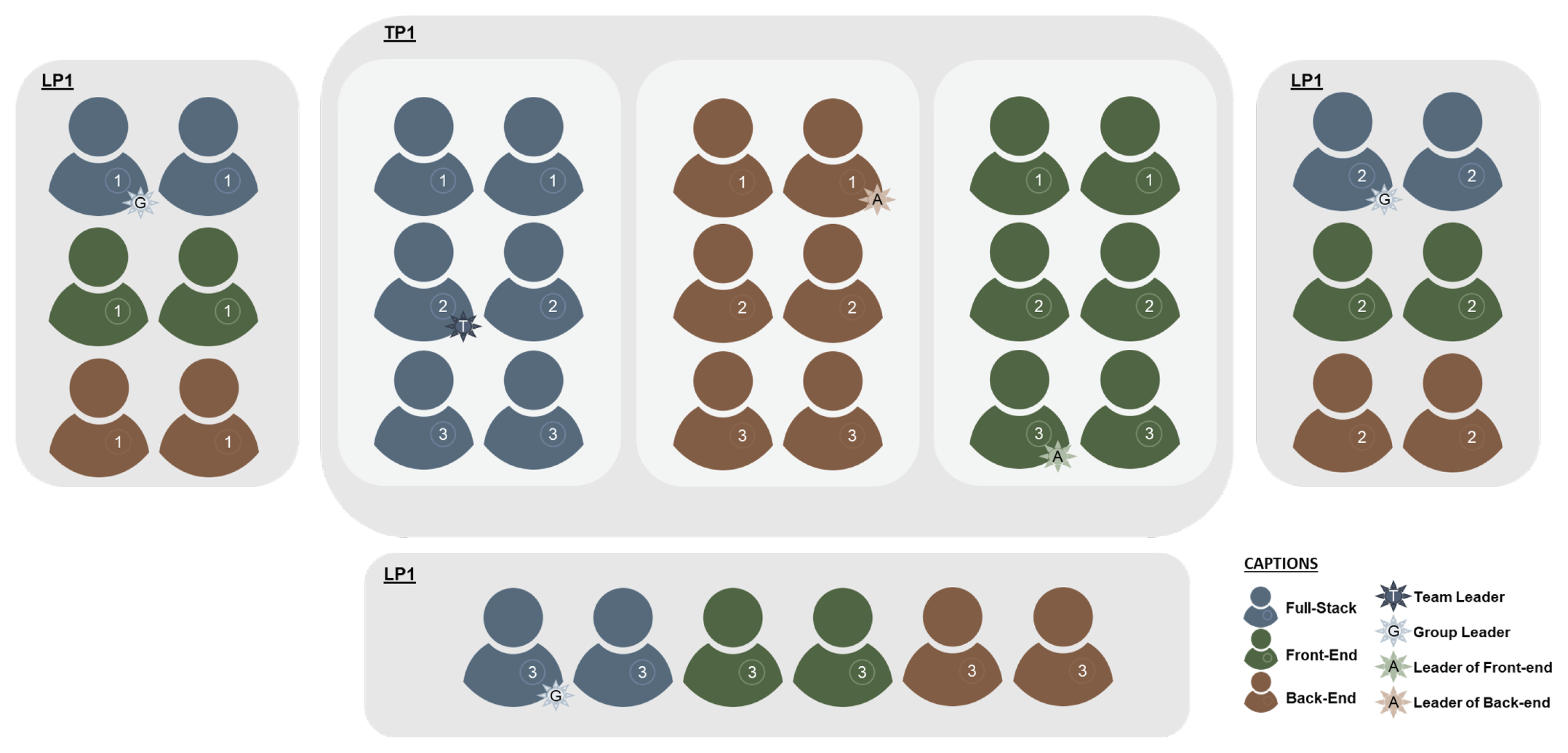
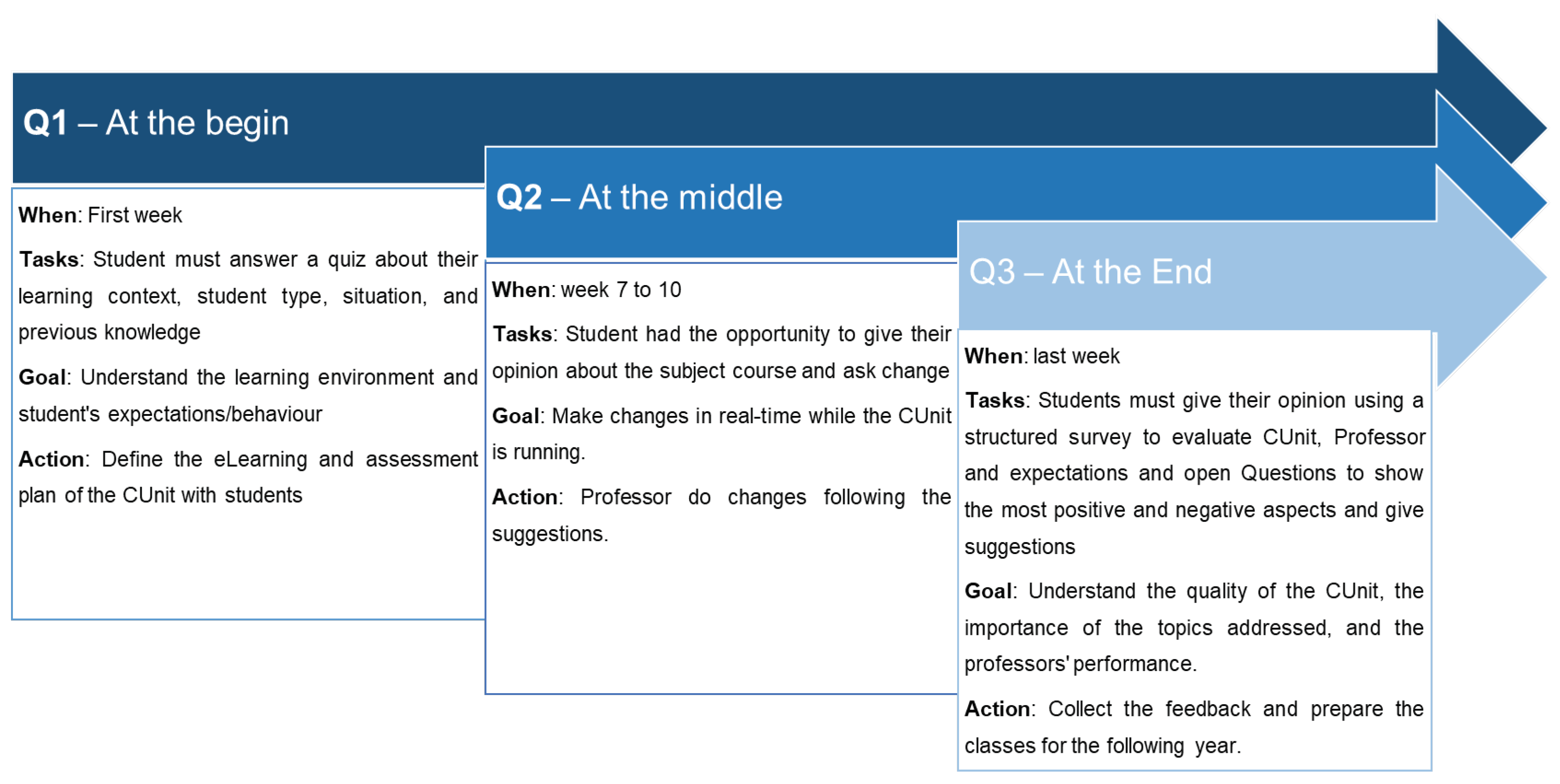
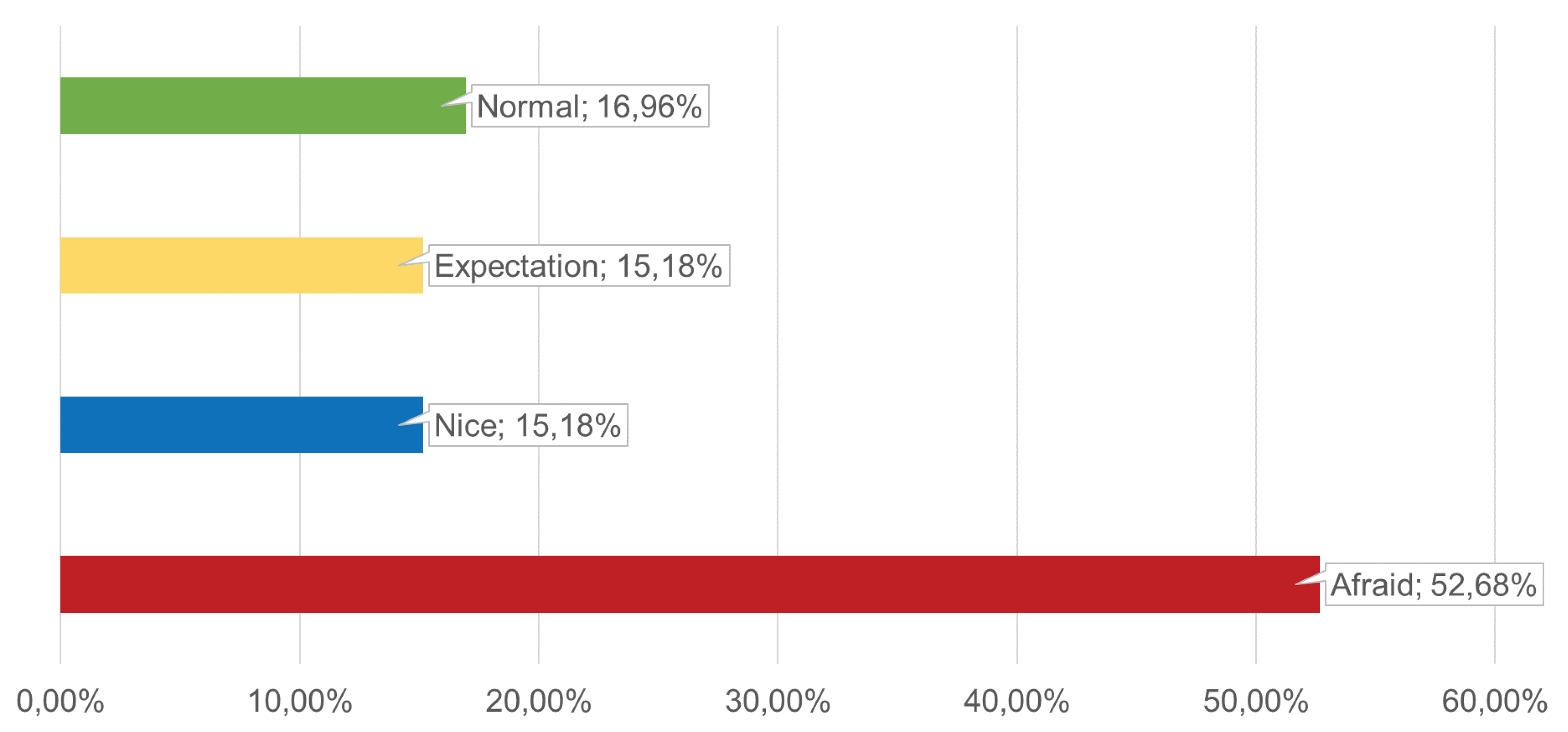

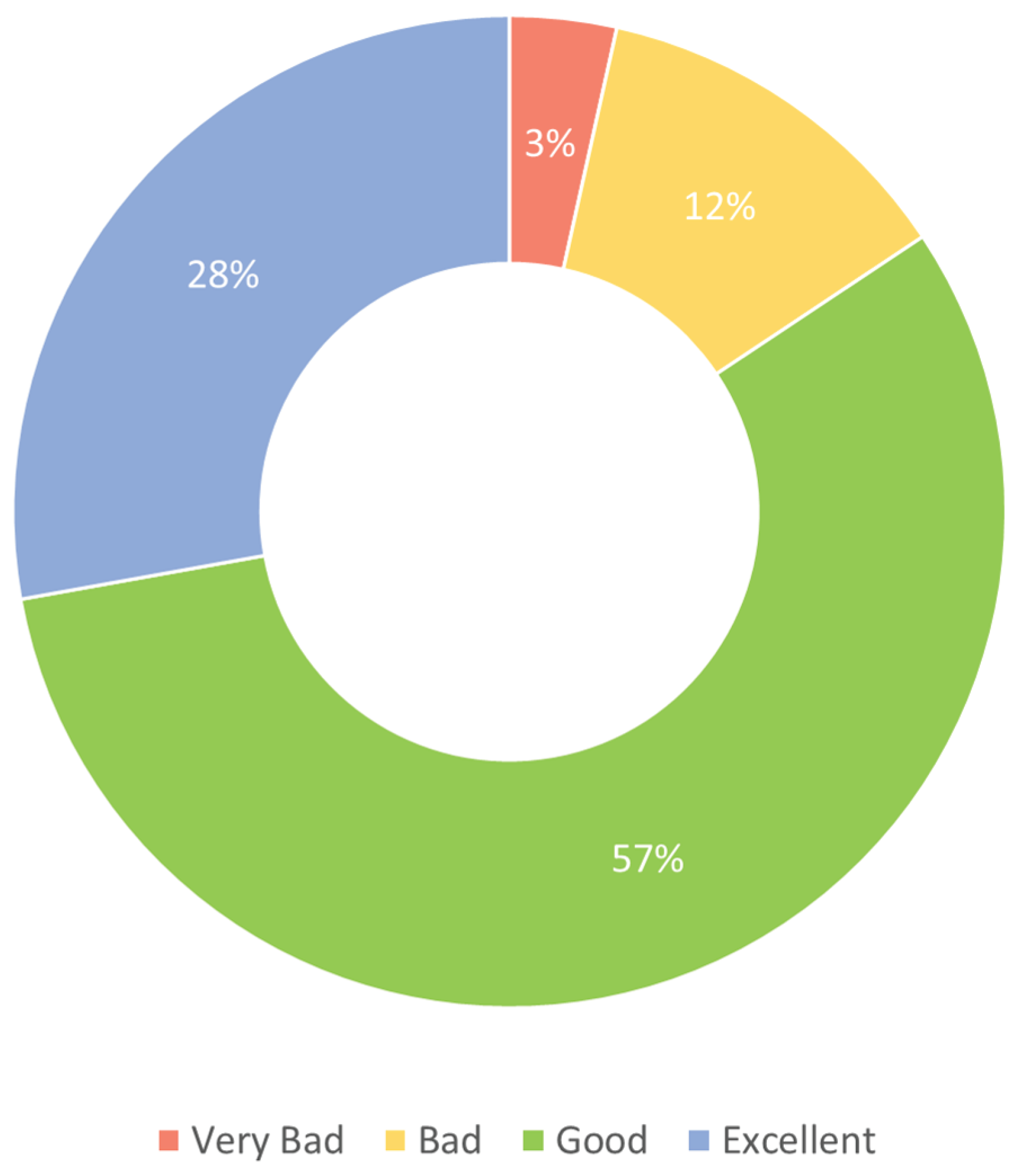

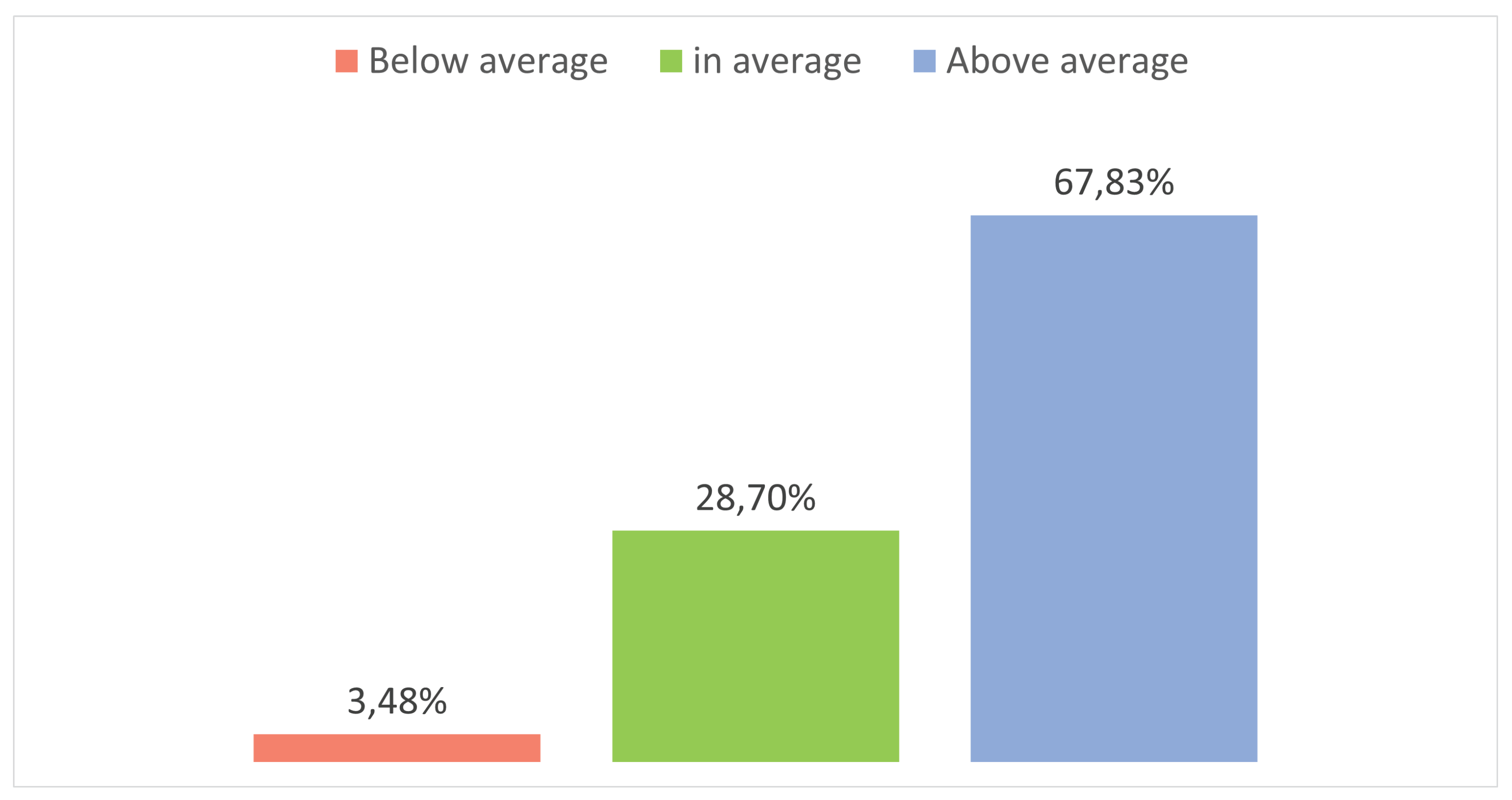

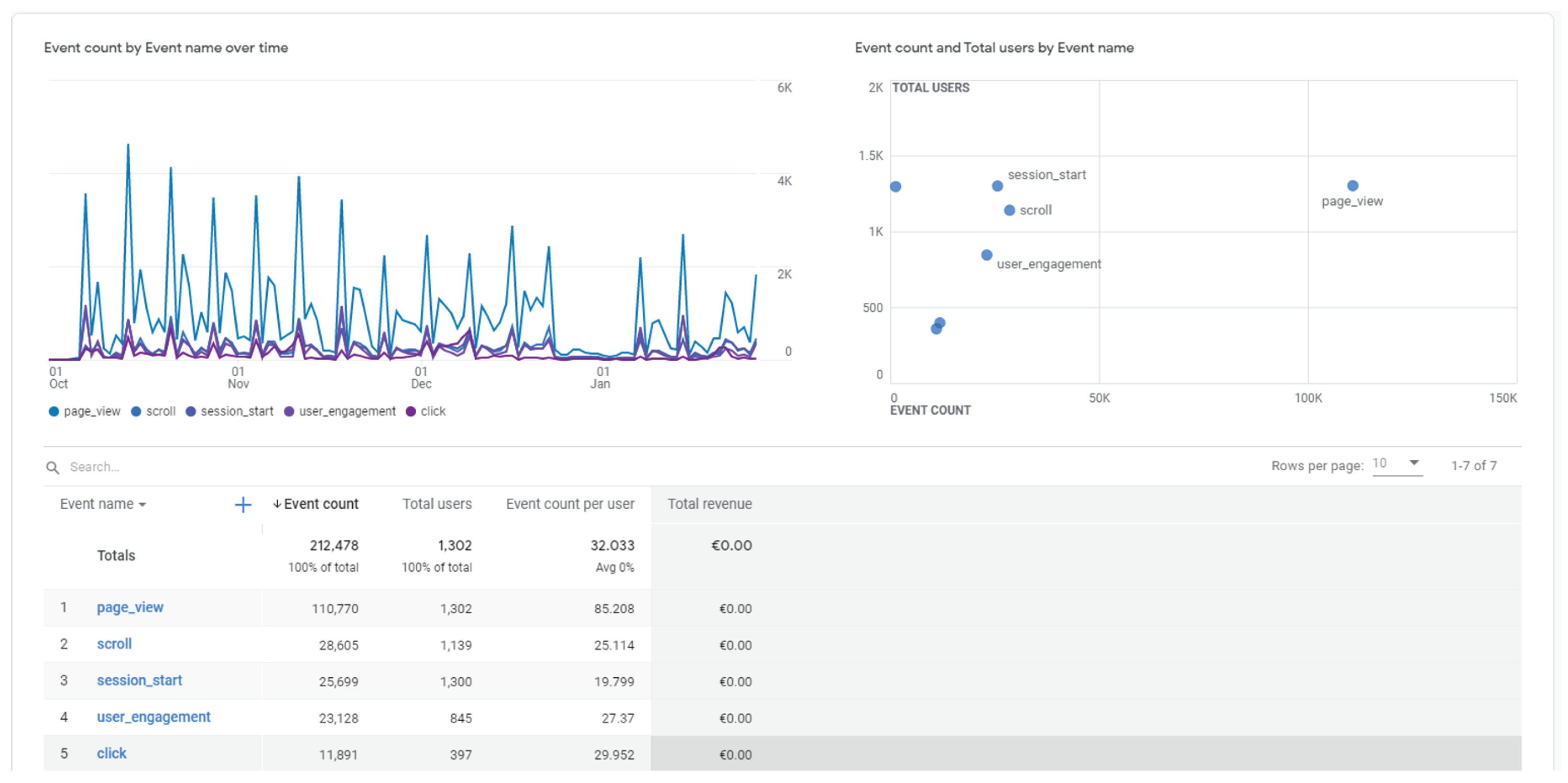

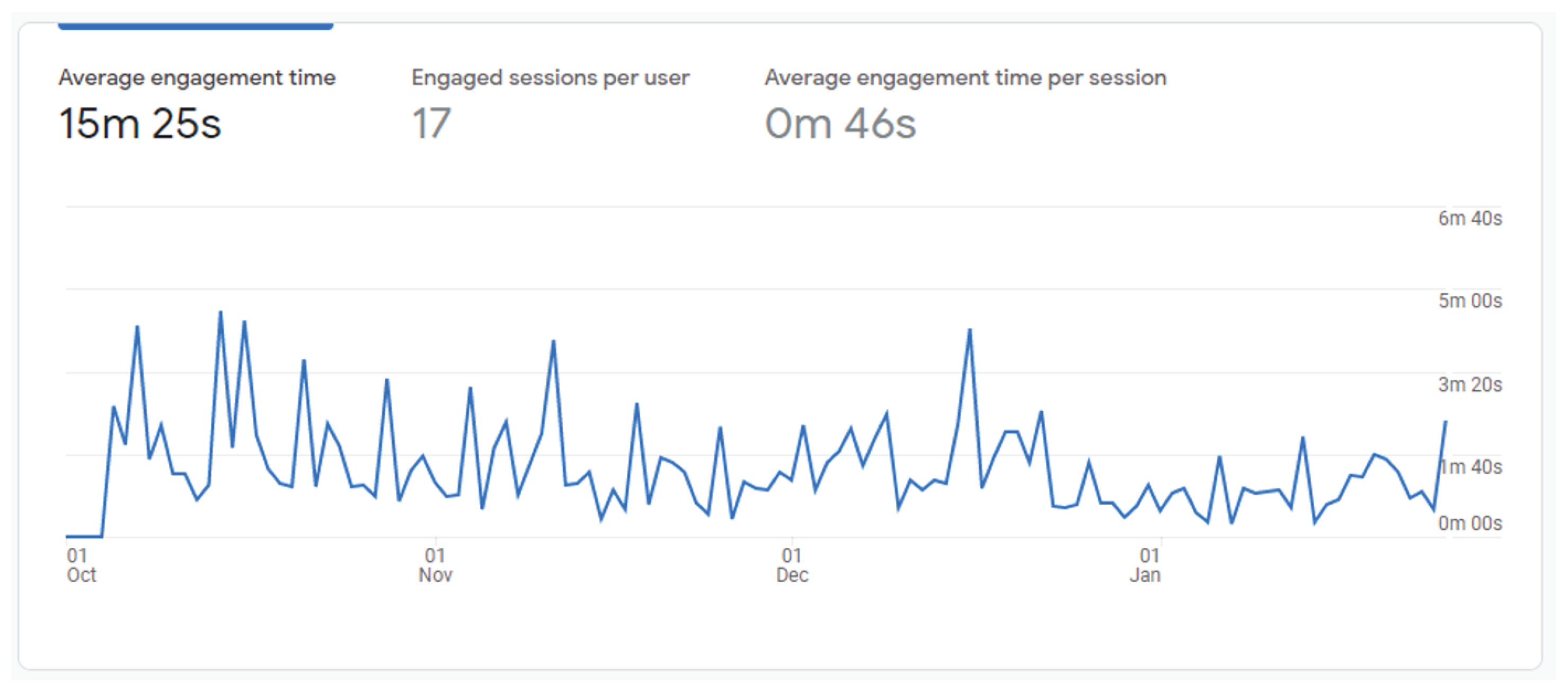
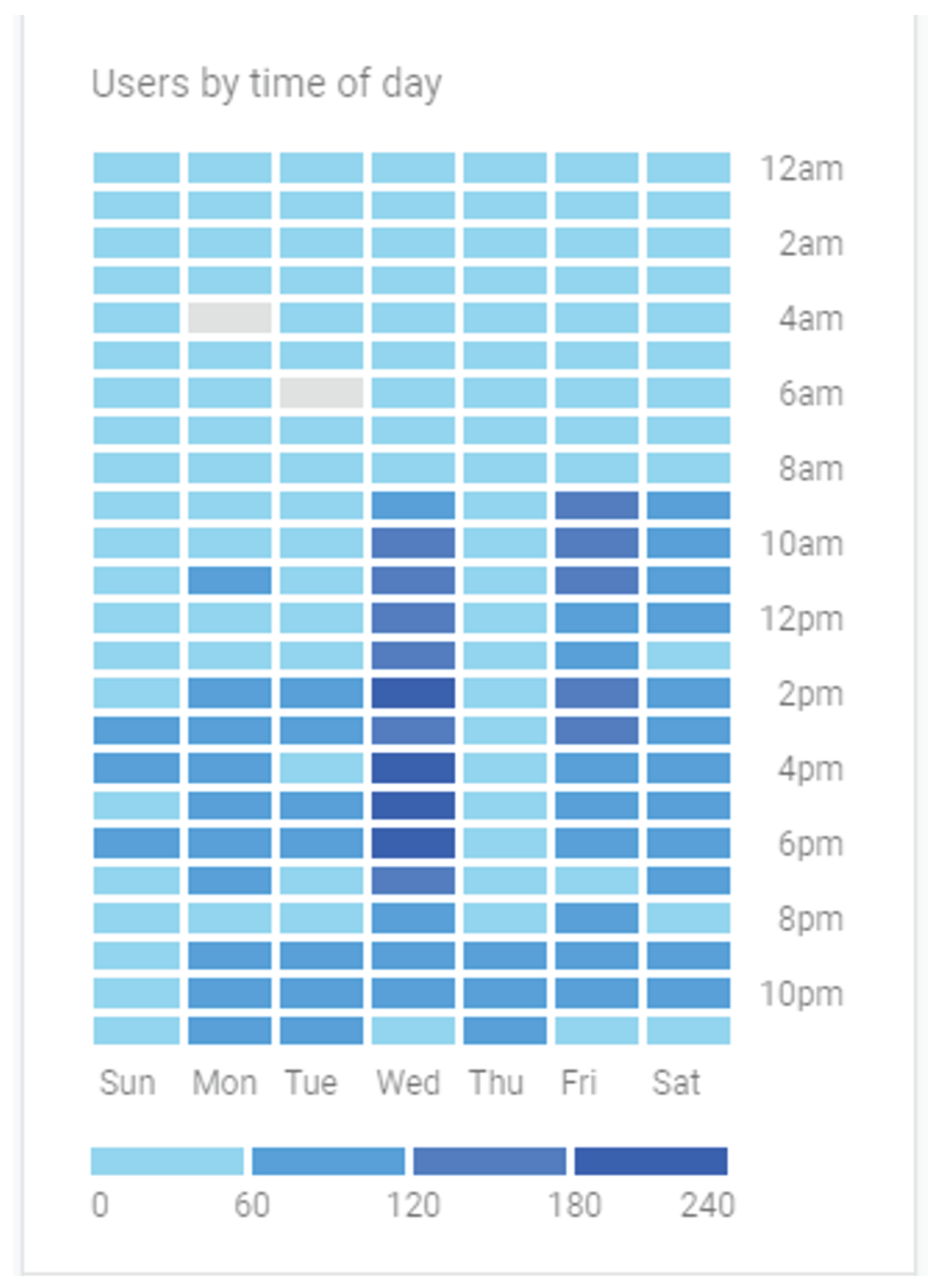


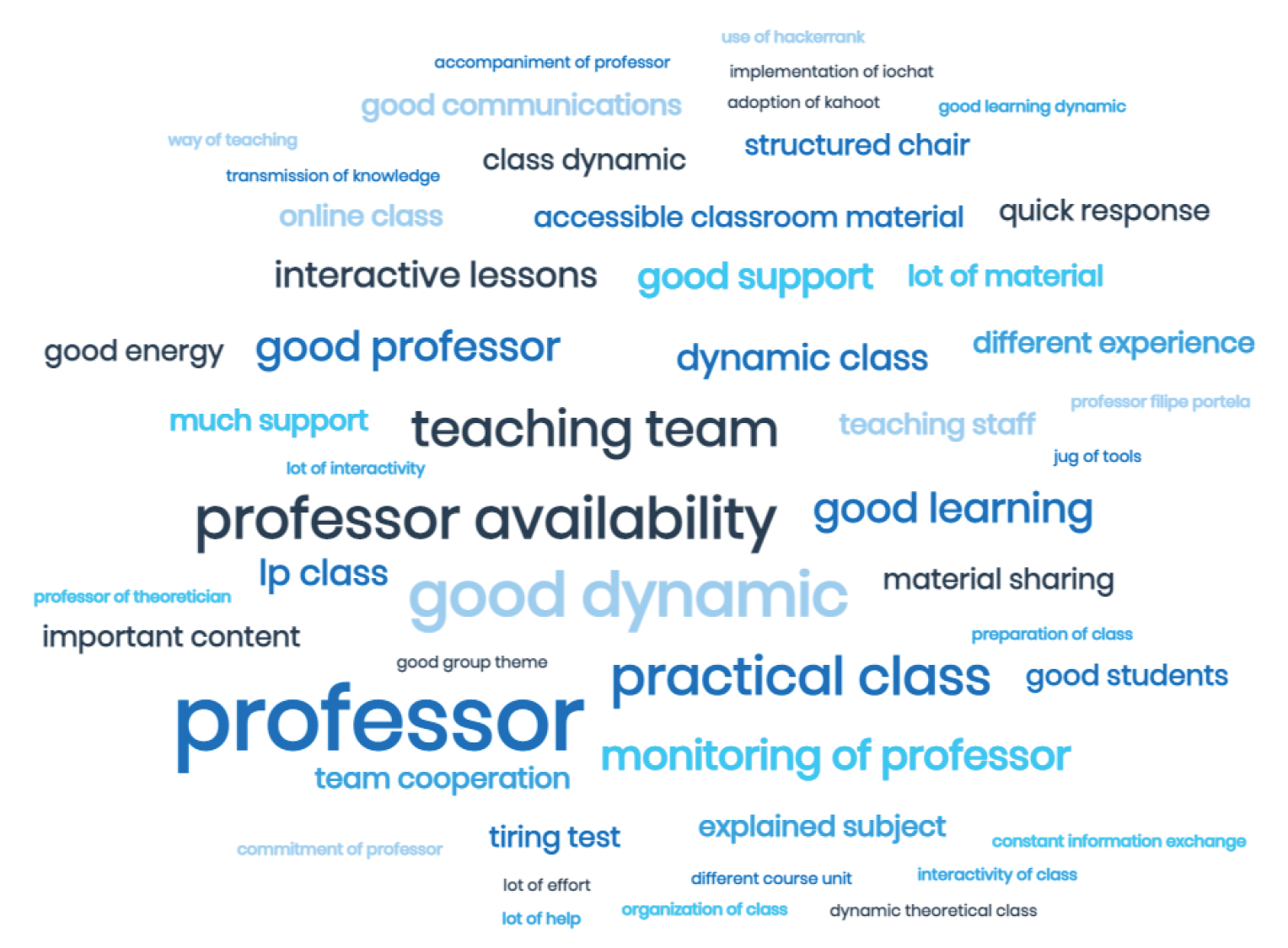
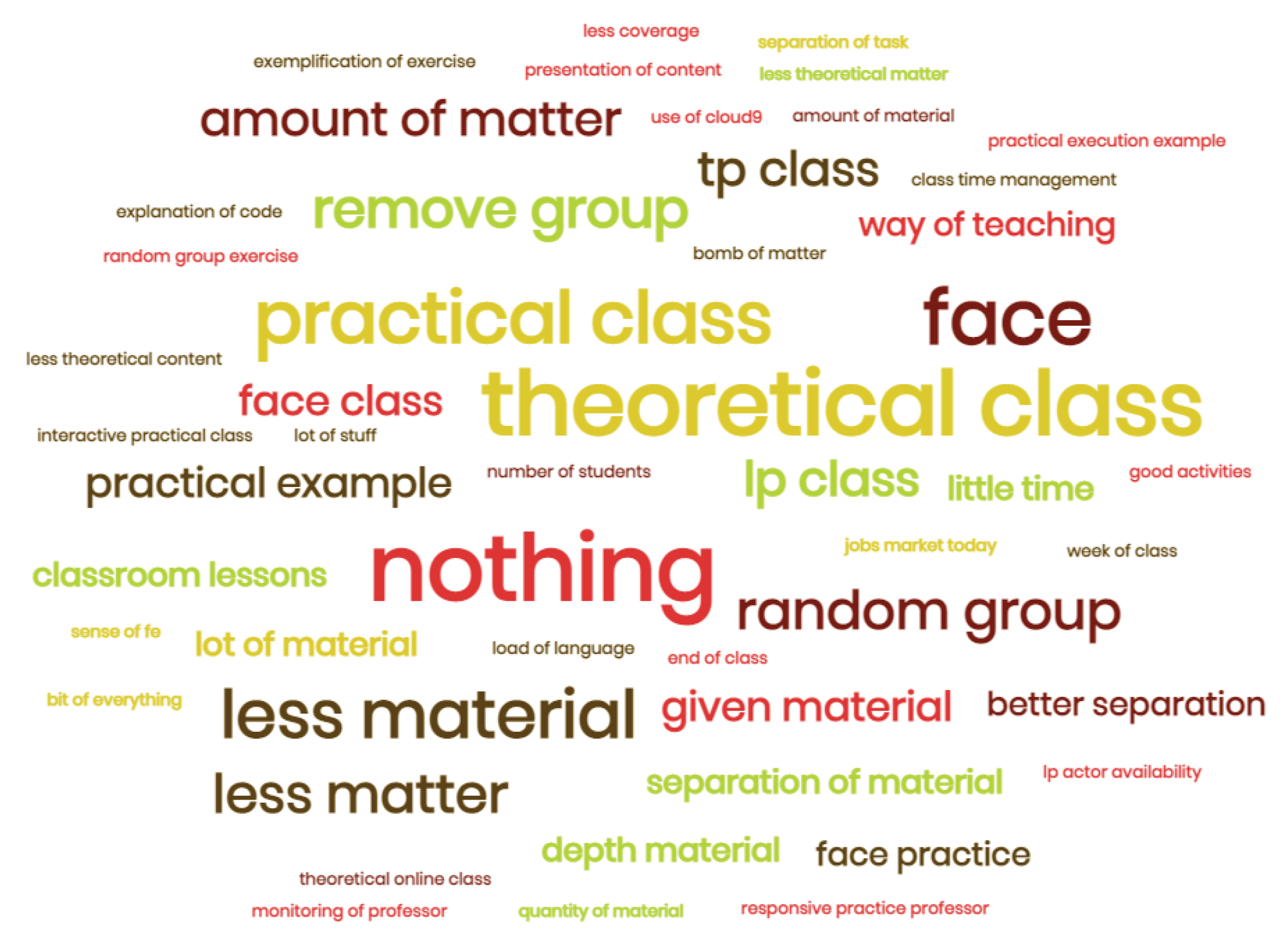
| Challenges Issue | Mitigation Plan |
|---|---|
| Answers and support delay | Keep the Drive and a FAQ updated Use a direct communication system—ioChat |
| Individual assessment copy | Time-limited exercises—Accomplish quick and short activities under pressure (without time to think—10 to 60 s questions) Questions had personal attributes, which made each exercise unique (e.g., first and middle name as the function’s name) Random Locked exercises opened according to the student knowledge |
| Demotivation of the students | Implement all the gamification systems designed Create an extra CUnit survey Re-think assessment and gamification methods Talk with delegates to understand the reasons |
| Bad grades | Allow students to show the reason and allow them to use the rescue system Revise questions and answers |
| Technical Issues (e.g., cannot make attendances, and internet issues, login not available) | Create the students’ accounts at the platforms Prepare the environment and test all the platforms used Create a room for technical support. |
| Classes or evaluation misses due to external factors (e.g., health, family, devices, internet issues) | Prepare an individual assessment path with online challenges Create extra opportunities for assessment Record and store classes online |
Publisher’s Note: MDPI stays neutral with regard to jurisdictional claims in published maps and institutional affiliations. |
© 2022 by the author. Licensee MDPI, Basel, Switzerland. This article is an open access article distributed under the terms and conditions of the Creative Commons Attribution (CC BY) license (https://creativecommons.org/licenses/by/4.0/).
Share and Cite
Portela, F. Towards an Engaging and Gamified Online Learning Environment—A Real CaseStudy. Information 2022, 13, 80. https://doi.org/10.3390/info13020080
Portela F. Towards an Engaging and Gamified Online Learning Environment—A Real CaseStudy. Information. 2022; 13(2):80. https://doi.org/10.3390/info13020080
Chicago/Turabian StylePortela, Filipe. 2022. "Towards an Engaging and Gamified Online Learning Environment—A Real CaseStudy" Information 13, no. 2: 80. https://doi.org/10.3390/info13020080
APA StylePortela, F. (2022). Towards an Engaging and Gamified Online Learning Environment—A Real CaseStudy. Information, 13(2), 80. https://doi.org/10.3390/info13020080






